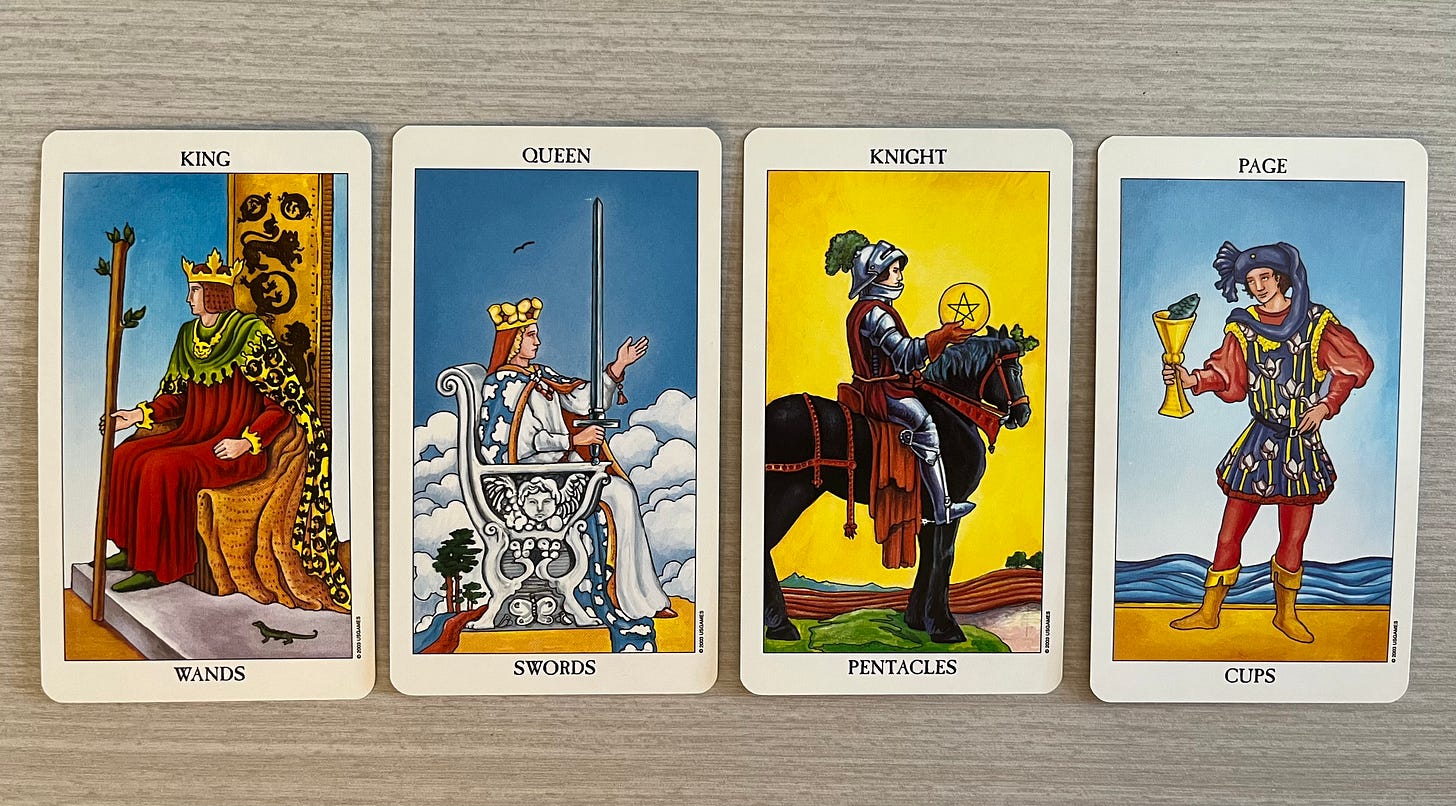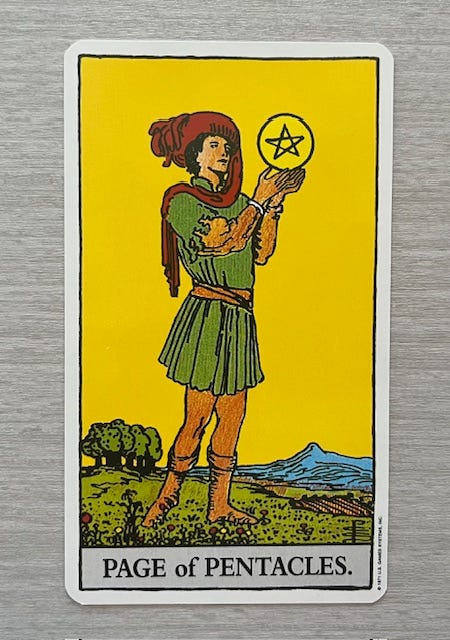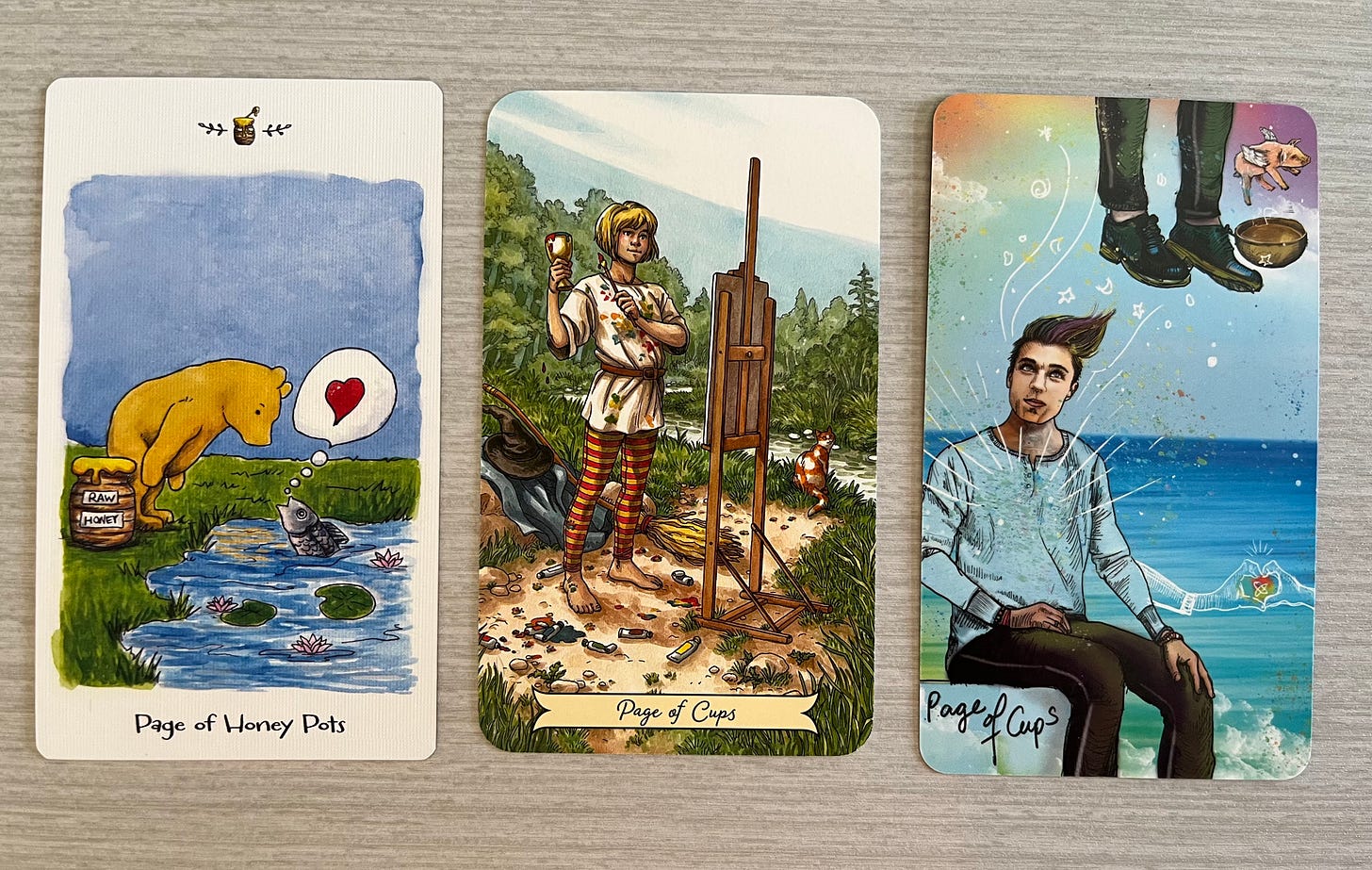For years I would feel challenged by the appearance of a court card in a Tarot reading. Who am I kidding - this still happens! I can confidently say I am not alone in my struggles learning the court card meanings, whether it’s on its own, or part of a larger spread. Given that there are four court cards for the four suits in a tarot deck, they appear frequently. I would say I’ve come to appreciate the court cards at this point in my tarot practice, but I still find they can be tricky depending on the reading and deck being used.
As a very general overview, there are four court cards (Page, Knight, Queen, King) for the four suits of the Minor Arcana (Cups, Pentacles, Swords and Wands), so 16 in total.
The court cards truly can add a lot to a reading. They might represent a person in your life or that of the querent’s if you are reading for someone else. They can reflect personality traits, highlight a theme, or embody an ‘energy’. For example, the King of Swords could represent a person that is pragmatic and logical. It could represent those traits that apply to the situation/question; suggest a theme as in “seek the facts and use logic”; embody the energy of intellect and truth; or it could be a combination of these interpretations.
Why are the court cards notoriously difficult to learn and read?
I’ve come up with a few reasons for this.
In general, the court cards are usually seen through the eyes of age, and masculine or feminine energy: Page - young, gender neutral; Knight - young adult, masculine; Queen - mature, feminine; King - mature, masculine. This construct is pretty binary and the titles have a medieval bend that are not as relatable in modern times. In fact, it is common to see them renamed in modern decks.
If you are learning with the traditional Rider-Waite Smith deck, the court cards look similar to one another and appear fairly unidimensional in my opinion. If you are reading Tarot intuitively and trying to not look up meanings right away, the court cards may leave you with less to interpret than some of the other cards in the deck.
For instance, a common three card spread includes: current situation, obstacle and advice. Even before we get into the meanings of the court cards, you can see where pulling the Page of Pentacles for a current situation could leave you a little perplexed if relying on your intuition alone.
(From the original Rider-Waite Tarot deck)
I’ve been taking a closer look at my own approach, which is to first see the card as a person or personality, but then more about the “energy” and theme. As a person, the Page of Pentacles is learning and dreaming of attaining a goal in the material world. As an energy and theme, we may see this as the potential for material success through learning or dreaming. If we then go back to the example of this appearing as the “current situation”, it may have to do with a desire to manifest something earthly (Pentacle) as in health, wealth, finances, work, etc.
Another reason the court cards can leave us stymied is the actual assigning of gender, age, and other traits like personality and status. Depending on the question assigned to the card, it can be initially confusing. Modern decks tend to allow for more imagery which can make it easier to connect with the multifaceted meaning and energy of the cards.
(Page of Cups from The Wisdom Of Pooh Tarot, Everyday Witch Tarot and The Light Seer’s Tarot)
When I was researching on court cards, I realized the breadth of information available. I did say “primer” in the title so we are just dipping our toes! Next time I will focus on the meanings of the cards.
Until next time…
Sara ✨
“The Tarot is not about predicting the future - it's about revealing the truth your soul already knows. Intuition is the voice of your inner healer.” ~ Leticia Mendez, Tarot Guide for Beginners + Printable Tarot Deck



